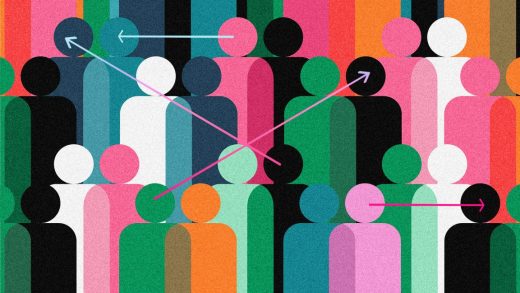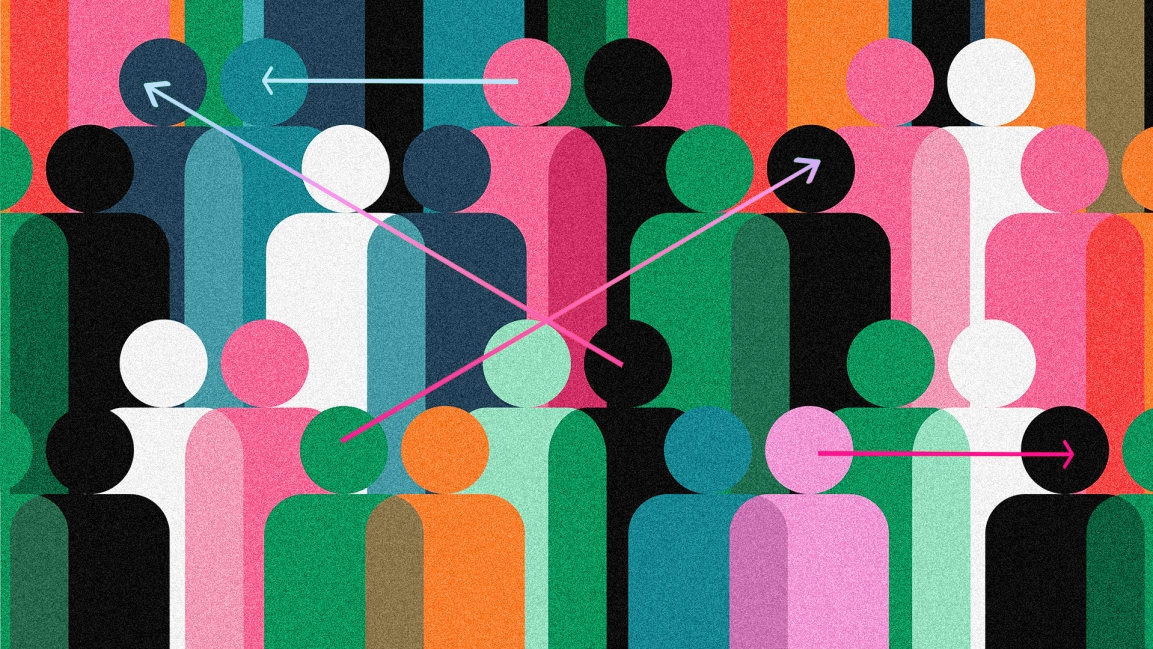Code-switching may be a survival strategy but ‘culture coding’ can be a superpower
I grew up in an all-white suburban town in New Jersey called Basking Ridge. My family was one of only a handful of African American families in the town.
While I was growing up, basketball became a large part of my identity. I frequently found myself traveling from my suburban bubble into cities and playing for teams where, suddenly, a white person would find themselves in the minority.
For much of my life, it seemed like my entire existence was not “Black” enough for my teammates and not “white” enough for my all-white town. I’ve since talked to other Black friends with similar backgrounds and they remember being called an “Oreo,” a crude and offensive reference to being “Black on the outside and white on the inside.” In my own experience, I just recall always feeling confused, annoyed, and at times angry.
It’s a natural human response to try to adapt to your environment when you feel like the odd one out. While it was confusing at the time, code-switching throughout my youth ultimately helped me hone a skill I now see as a superpower today.
The term “code-switching” has always felt like a negative thing–changing the way you look and act to impress or fit in. But it’s really more of a tool I can choose to use when I want. To me, code-switching is not about “faking” or “acting.” It’s an ability you acquire through years of adaptation and heightened sensibility.
I want to challenge us all to recast this phrase as “culture coding.” To me, culture coding describes the ability to assess a situation, understand what it will take to survive and/or potentially thrive within it, and then decide how to engage (or not). Nobody should have to culture-code to feel like they fit in or to get ahead, but many of us end up doing it. It’s worth unpacking where the original term “code-switching” comes from to understand the pressure to culture-code, the anxiety many people feel around it, and why it is ultimately a powerful tool.
“Code-switching” is actually originally a term from linguistics used to describe multilingual people. But when we talk about it in the context of everyday life, we’re really talking about assimilation and cultural power.
In the United States, we generally view “American culture” as the dominant culture–the one that defines what most individuals can be expected to have in common. Speaking English, celebrating Fourth of July, knowing a bit of American civics and history, eating hamburgers: All of these could be said to be features of the dominant American culture.
Because of the ethnic makeup of this country, as well as the racial hierarchy imposed on it from its founding, a lot of those features have historically been determined by white people.
What is “American English?”
Let’s take language as one example.
Language helps human beings communicate, learn, work together, and establish a sense of community. And in modern civilization, being able to “talk the right talk” gives you access to jobs, education, status, social circles, and, of course, a sense of personal belonging.
But what exactly is the “right talk”? For most of American history, it’s been generally agreed that Modern Standard English–the kind you read in the newspaper and in textbooks–is what everyone speaks. It’s what you use in school, at work, in the Senate, on the pulpit, and on the evening news.
But there are other dialects spoken in this country and we haven’t always agreed on what Modern Standard American English looks like. In the 19th century, soon after gaining independence, Americans began to debate how best to distinguish our rapidly developing national dialect, American English, from its British parent. The two were and remain different: That’s why we have noticeable differences from the Brits in how we speak and write. It remains to this day a powerful differentiator of national identity.
But while Noah Webster was writing the first American English dictionary, white legislators across the United States made sure enslaved Black people were denied the right to literacy. Many of the plantation owners and politicians in the South feared (correctly) that the rising tide of Abolitionism in the North would reach more eyes and ears if Black people learned to read and write. (And a short-lived 1831 rebellion, led by enslaved Virginian Nat Turner, eventually proved them right.)
For centuries, then, white people barred Black people from “talking their talk.” Imagine a world in which much of the shared knowledge in a nation’s culture, government, and religions–all the stories of the Bible, all the news about changing laws and raging wars–were primarily filtered through white people’s words. White Americans founded a society that largely excluded Black people from one of the most powerful tools in the nation: a shared language.
At the same time, over the centuries, we as a Black community developed our own unique ways to engage, relate, and communicate with each other–as well as the ability to turn it “off” or “on” when we choose.
Nowadays, of course, access and exposure have evolved. But the legacy of what is linguistically “appropriate” or “correct” remains strong. For people from underrepresented communities or non-white backgrounds, this legacy is what creates the pressure to code-switch and assimilate to norms of the dominant linguistic culture.
Culture coding as a superpower
But that ability to culture-code can be a superpower. I recently had a conversation about this with a friend of mine, Sebastian, who identifies as gay and works in advertising. I asked him what his experience has been, if any, with “code-switching” and his answer felt analogous to some of my experiences. He said, “It depends on the context, but I’ve definitely used gay slang and mannerisms to get laughs or make people feel at ease. In [the advertising] industry, it’s all about being connected to culture, so clients like seeing that authenticity. Plus when they know more about me and laugh with me, we get to develop a deeper relationship.”
Of course, not every professional environment creates these opportunities. And that must be called out and challenged wherever possible.
When we acknowledge that we all live in a society that privileges Western cultural norms and American or European standards of style and beauty, we can see how code-switching prevents large numbers of people from feeling like they can be themselves in public environments. Wearing natural hair, speaking native languages, dressing in a traditional style–these are some of the most fundamental things humans do every day. We shouldn’t ever have to agonize over whether they’ll be negatively perceived.
We live in a multicultural and multilingual society. It’s inevitable that culture-coding will occur. But when it comes to places where systems of power are in play–like at work, schools or any “official” community space–we need to be aware of the very human, unconscious bias to favor those who look, speak, and act like us. Or to put it in other terms: people we unconsciously perceive to look, speak, and act the “right” way.
It all comes down to empathy and the understanding that, if we want people to feel like they belong, we’ve got to challenge what we’ve been taught to believe is standard, correct, or appropriate. We have to make room for and defend diversity in language, expression, dress, and self-expression.
At the same time, we should celebrate that culture-coding is not just a strategy for surviving or getting ahead. It’s a heightened form of situational awareness that taps into the multidimensional nature of our true selves.
Being able to speak multiple languages or dialects, understanding different codes of behavior and expression, feeling authentically connected to a range of styles and forms of art–all of these abilities amount to an incredible social and cultural versatility that we should celebrate in our society. These differences should make us feel like we belong more–because they do.
I always go back to this post I wrote about my daughter a few months ago. Mia was 15 months old at the time, still blissfully unaware of distinctions of race, ethnicity, or that sickly phrase I used earlier: “dominant culture.” We walked past a musician and she took to the street to start dancing like nobody and everybody was watching, completely and utterly herself in that moment.
Ultimately, those are the environments we want to be building. Places where our linguistic and cultural differences enhance our sense of authenticity, help us feel like we belong, and enjoy the respect they deserve for being exactly what they are: differences.
This article was adapted and reprinted with permission from Diversity Explained.
Porter Braswell is the Founder of Diversity Explained, Co-founder and Executive Chairman of Jopwell, author of Let Them See You, and host of the podcast Race at Work. Subscribe to his newsletter at Diversity Explained to stay up to date on all new content.
Fast Company , Read Full Story
(29)



